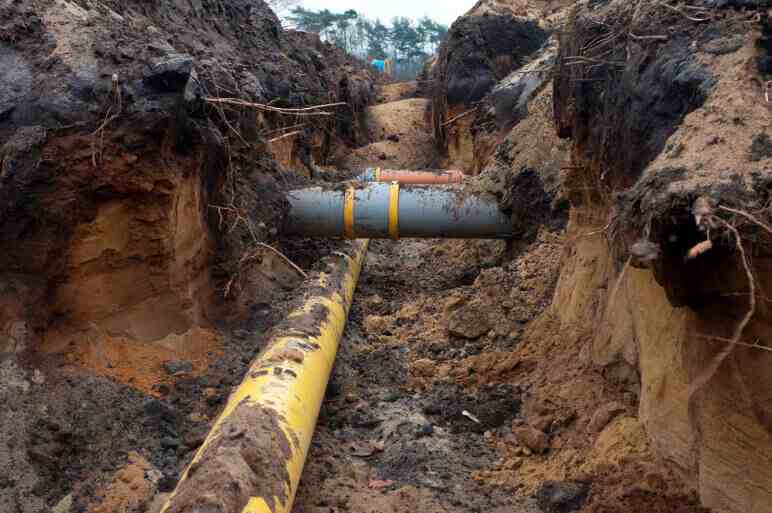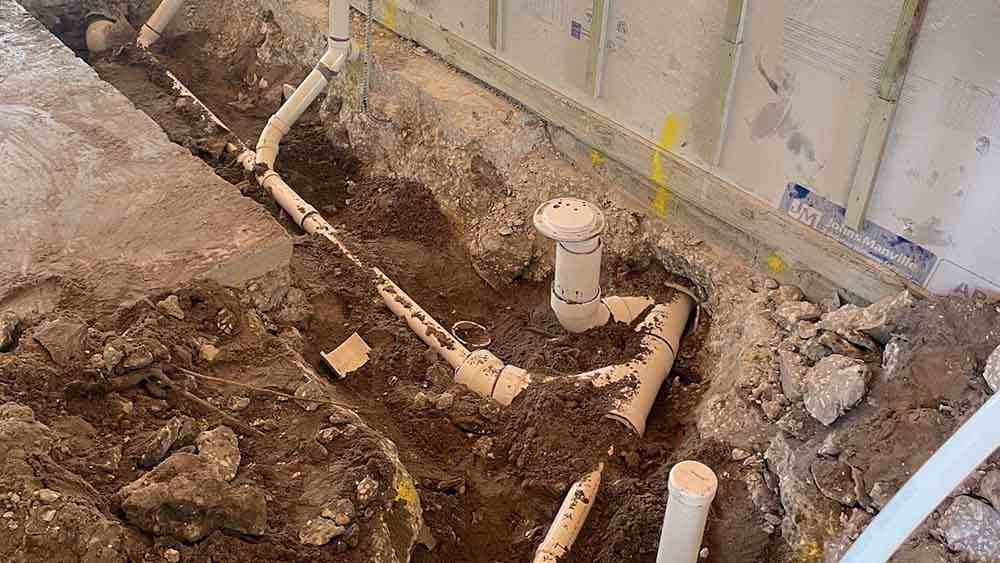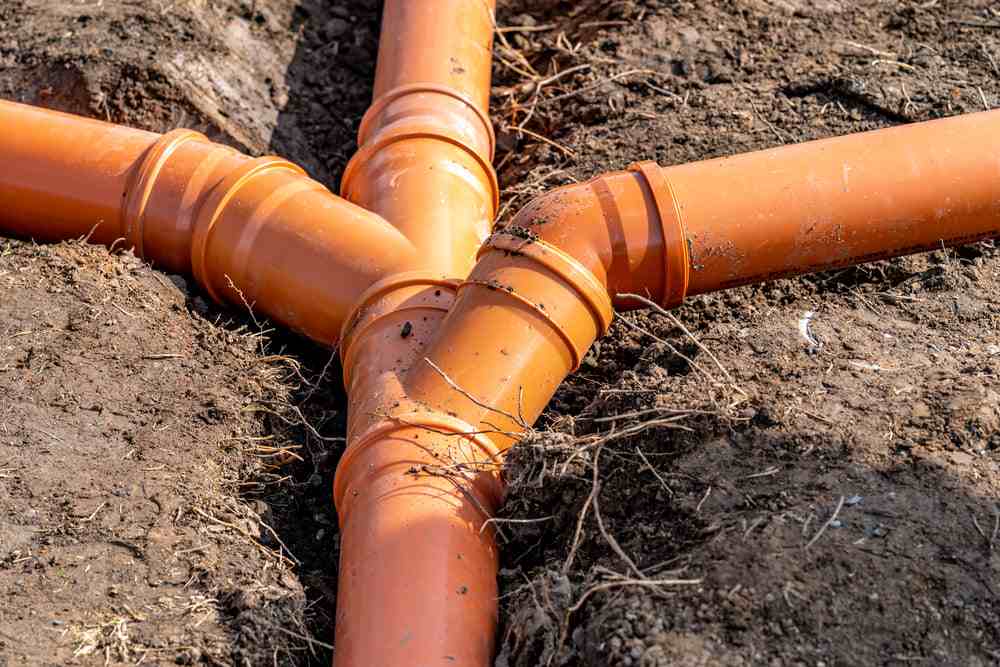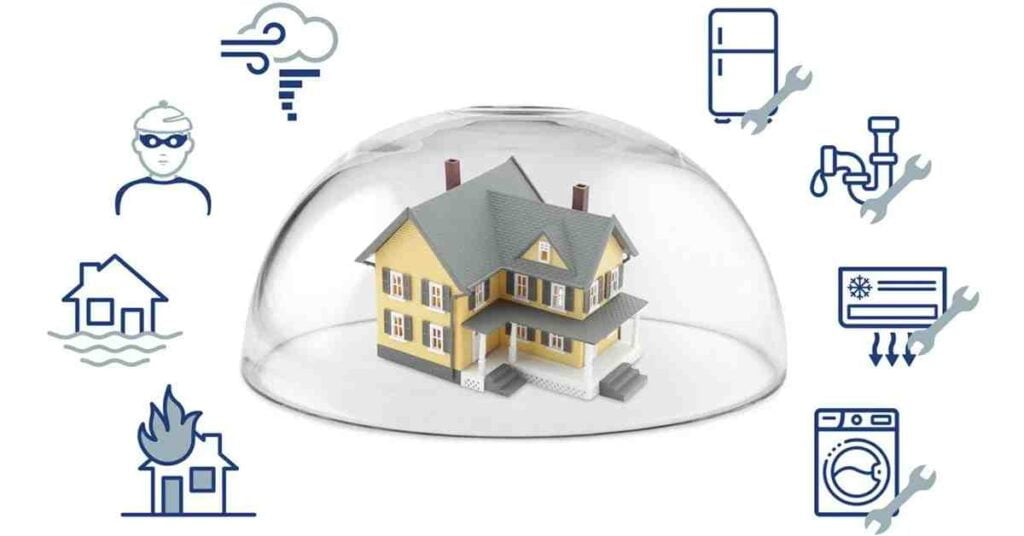When it comes to owning a home, there are many things to think about, and one of them is the health of your sewer line. A damaged sewer line can lead to messy and expensive problems. This is where sewer line insurance comes in. But is sewer line insurance worth it?
In this article, we’ll explore what sewer line insurance is, why you might need it, and whether it’s a smart choice for homeowners. By the end, you’ll have a better understanding of whether this type of insurance is right for you and your home.
What is Sewer Line Insurance and What does It Cover?

Sewer line insurance is a specialized coverage designed to protect homeowners from the financial burden of repairing or replacing sewer lines that are not typically covered by standard homeowners insurance.
This insurance is particularly important because the sewer line, which connects a home to the municipal sewer system, is the homeowner’s responsibility. Damage to these lines can occur due to various factors such as tree root intrusion, heavy rains, or general wear and tear, leading to potentially costly repairs.
Typically, sewer line insurance covers the costs associated with repairing or replacing damaged sewer lines, including cleanup and restoration services following a backup. However, it’s essential to note that not all damages are covered.
Home Insurance for Septic Systems
For instance, damage resulting from neglect, maintenance failures, or tree root growth may be excluded from coverage. Homeowners should also be aware that while some policies may cover sewer backups, they may not extend to the actual repair of the sewer line itself.
Common Causes of Sewer Line Damage
Common causes of sewer line damage can significantly impact homeowners, leading to costly repairs and health hazards. Here are the primary culprits:
- Tree Roots: Tree roots are a leading cause of sewer line damage. As roots seek moisture and nutrients, they can infiltrate pipes through small cracks, causing blockages and even breaking the pipes apart. This issue is particularly prevalent in older systems made of clay or cast iron.
- Blockages: Clogs often result from improper disposal of materials such as grease, food waste, and non-flushable items like paper towels and sanitary products. These blockages can lead to significant pressure on sewer lines, resulting in cracks or breaks.
- Aging Infrastructure: Over time, sewer pipes naturally deteriorate due to corrosion and sediment buildup. Older materials may not withstand the test of time, leading to leaks and ruptures.
- Improper Installation: Sewer lines that are not installed correctly may have improper slopes or use substandard materials, which can lead to future issues. This includes inadequate support that may cause pipes to sag or settle improperly.
- Ground Settlement: Soil movement or erosion can cause the ground around sewer lines to shift, leading to pipe bending or sagging. This situation can create low spots where waste accumulates, increasing the risk of blockages.
- Heavy Equipment: Construction activities or landscaping work can inadvertently damage sewer lines if heavy machinery compresses or crushes them. This risk is particularly high for PVC pipes, which may not withstand excessive weight.
- Sanitary Backups: Municipal sewer systems can experience blockages that lead to sewage backing up into residential lines, causing overflow and damage.
Affordable Home Insurance Tips
Understanding these causes can help you take preventive measures and maintain your plumbing systems effectively. Regular inspections and proper maintenance are key to avoiding severe sewer line issues.
Does Homeowners Insurance Cover Sewer Lines?

Homeowners insurance typically does not cover sewer line damage, as this responsibility falls on the homeowner up to the point where the sewer line connects to the municipal system.
Coverage may apply if the damage is caused by specific perils listed in the policy, such as fire or vandalism, but common issues like wear and tear, tree root intrusion, or negligence are usually excluded.
To protect against potentially high repair costs, homeowners can consider purchasing sewer line insurance as an add-on to their policy or as a standalone coverage option.
Does Renters Insurance Cover Mold?
This specialized insurance can cover repairs and replacements of damaged sewer lines that standard homeowners insurance often does not address.
Is Sewer Line Insurance Worth It?

Sewer line insurance can be a valuable investment for homeowners, as standard homeowners insurance typically does not cover the costs associated with sewer line repairs. This type of insurance specifically protects against damages that occur to the sewer lines running from your home to the city’s main sewer system, which are the homeowner’s responsibility.
Given that repairs can range from $5,000 to $20,000, depending on the severity of the damage and local conditions, having this coverage can save homeowners significant out-of-pocket expenses in case of a malfunction or backup caused by factors like tree root intrusion or normal wear and tear.
Many homeowners may not realize that their existing policies do not cover these lines, often leading to unexpected financial burdens. The average cost for sewer line insurance is relatively low, typically ranging from $30 to $40 per month, making it an affordable option for peace of mind.
Additionally, some utility companies offer similar coverage at competitive rates, though it’s essential to compare these options with what traditional homeowners insurance providers offer.
Ultimately, whether sewer line insurance is worth it depends on individual circumstances such as the age of your home, the condition of your existing lines, and local environmental factors. For homes with older plumbing or in areas prone to sewer line issues, this insurance can be a prudent choice that protects against potentially devastating repair costs.
How to Choose the Right Sewer Line Insurance Plan?
Choosing the right sewer line insurance plan involves several important steps. First, review the coverage options offered by different providers to ensure they cover common issues like tree root intrusion, wear and tear, and excavation costs.
Next, evaluate the coverage limits to make sure they are sufficient to cover potential repair costs, which can be substantial. Pay attention to any waiting periods before the coverage kicks in, as well as exclusions and limitations that might affect your protection.
Additionally, consider the cost of the premium and any deductibles you may need to pay. It’s also beneficial to read customer reviews and ratings to gauge the reliability and customer service of the insurance provider. By carefully comparing these factors, you can select a plan that offers the best protection for your needs and budget.
Where to Get Sewer Line Insurance?
When looking to get sewer line insurance, there are several options and providers to consider. Let’s dive in;
1. Homeowners Insurance Providers
- Start by checking with your current homeowners insurance provider. Many offer sewer line coverage as an add-on, known as endorsements or riders, typically costing between $40 and $160 annually. This coverage usually pays for repairs or replacements of the sewer line itself.
2. Specialized Insurance Companies
- American Family Insurance: Offers comprehensive sewer line coverage that includes wear and tear, collapse, and even mechanical breakdowns. Their plans can be tailored with various options.
- HomeServe: Known for home warranties, they provide sewer line coverage starting at about $13 per month for up to $6,000 in coverage.
- Service Line Warranties of America: Offers unlimited annual benefits and covers up to $10,000 per occurrence for sewer line repairs.
- American Water Resources: Provides basic sewer line coverage for around $9 per month, with high coverage limits per incident.
3. Utility Companies
- Some water utilities partner with insurance companies to offer sewer line coverage directly to their customers. This can often be added to your water bill at a low monthly cost ranging from $2 to $10.
4. Independent Agents
- Erie Insurance offers bundled service line protection that includes sewer lines as part of a broader utility coverage plan. Coverage can go up to $25,000 depending on the selected plan.
5. Online Comparison Tools
- Use online platforms to compare different insurance providers and their offerings. Many websites allow you to customize your coverage and get quotes quickly.
By exploring these options, you can find a sewer line insurance plan that fits your needs and budget.
How to Claim for Sewer Line Insurance?
Filing a claim for sewer line insurance involves several steps to ensure the process goes smoothly and efficiently. Here’s a general guide to help you through it:

- Contact Your Insurance Provider: As soon as you notice a problem with your sewer line, contact your insurance provider to report the issue. Use their 24-hour emergency line if available. Be ready to provide details about the damage, including the date and time it occurred, and a description of the problem.
- Document the Damage: Capture clear photos and videos of the damage before any repairs are made. This documentation will be crucial for your claim. Save all receipts related to repairs, cleaning, and any other expenses incurred due to the damage.
- Cleanup and Mitigation: Arrange for immediate cleanup to minimize further damage. This might involve hiring professionals to handle the cleanup process. Take steps to prevent additional damage, such as stopping the use of water in the affected area until repairs are made.
- File the Claim: Complete and submit any required claim forms provided by your insurance company. This may include a Notice of Claim form and supporting documentation. An insurance adjuster may be sent to assess the damage. Cooperate with them and provide any additional information they request.
- Follow-up: Keep in regular contact with your insurance provider to track the progress of your claim and address any questions or concerns that arise. Once your claim is processed, review the settlement offer carefully. If you have any disputes or need clarification, discuss them with your insurance provider.
GET SEWER LINE INSURANCE QUOTE
By following these steps, you can help ensure that your sewer line insurance claim is handled efficiently and effectively.
FAQs
Q 1. Is Sewer Line Insurance Required by Law?
Ans. No, sewer line insurance is not required by law. However, it can be a valuable addition to your homeowners insurance policy to protect against unexpected repair costs.
Q 2. How Much Does Sewer Line Insurance Cost?
Ans. The cost of sewer line insurance varies depending on the provider and the level of coverage. On average, it can range from $5 to $15 per month.
Q 3. Can I Purchase Sewer Line Insurance After a Problem Occurs?
Ans. Typically, you cannot purchase sewer line insurance to cover an issue that has already occurred. Insurance is meant to protect against future incidents, so it’s best to get coverage before any problems arise.
Q 4. Are There Any Alternatives to Sewer Line Insurance?
Ans. Yes, alternatives include setting aside an emergency fund for potential repairs or investing in a home warranty that includes sewer line coverage.
Q 5. How Can I Tell If My Sewer Line Is Damaged?
Ans. Signs of sewer line damage include slow drains, unusual odors, water backing up in your home, and lush patches of grass in your yard where the sewer line runs.
Q 6. Does Sewer Line Insurance Cover Damage Inside the Home?
Ans. Sewer line insurance typically covers the external sewer line up to the point where it connects to the municipal sewer system. Damage inside the home, such as from a sewer backup, may require additional coverage.
Conclusion
In conclusion, sewer line insurance can be a smart choice for many homeowners. It helps protect you from the high costs of unexpected sewer line repairs, which can be very expensive. If you live in an older home or an area with lots of trees, this insurance might be especially worth considering.
Before making a decision, think about your own situation and how likely you are to face sewer line issues. Talk to your insurance provider to learn more about your options and find the best coverage for your needs. Overall, having sewer line insurance can give you peace of mind and help you avoid financial surprises down the road.

Luna Haverford is a home insurance specialist with over 4 years of experience in the field. Holding a CPCU (Chartered Property Casualty Underwriter) certification, Luna is dedicated to helping homeowners find the best coverage for their needs. As an author on the ‘FundFinesse’ blog, Luna writes clear, easy-to-understand articles about home insurance.


